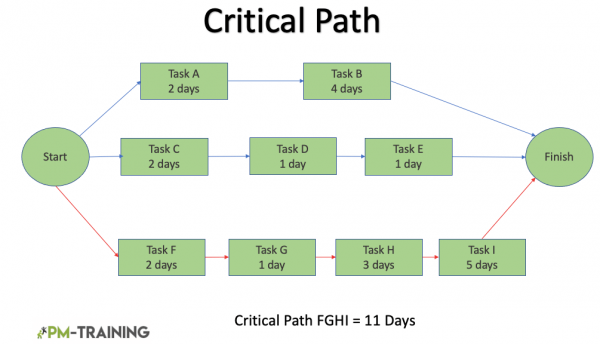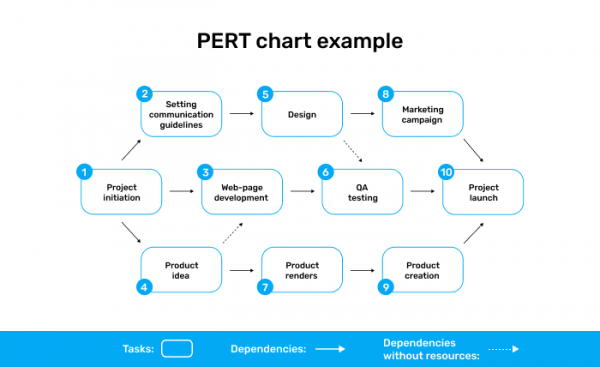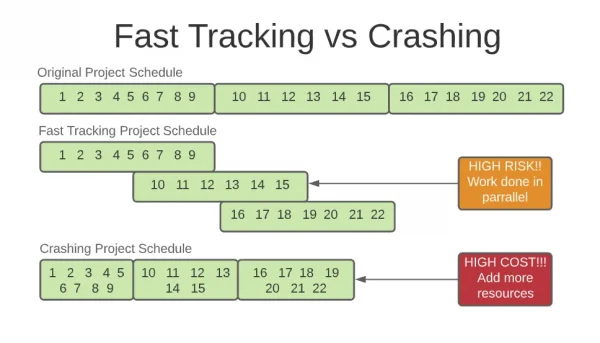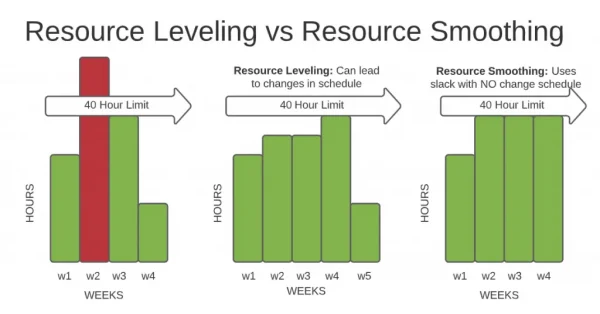In project management, a schedule is a list of activities with planned start and finish dates. The purpose of a schedule is to coordinate the project team so that they can work together efficiently to complete the project on time.
You can use different scheduling methods to create a schedule; each has advantages and disadvantages. In this blog post, we will look at some of the most popular scheduling methods used in project management.
Challenges in Project Scheduling
Project management can be a daunting task, especially when it comes to managing time and schedules. One of the biggest challenges is ensuring that all tasks are completed on time, and that team members are available when needed.
It can be a tricky balancing act, as some team members may have conflicting schedules or may be working on multiple projects at once. Some tasks may take longer than expected or require additional resources.
To make matters even more complicated, deadlines often need to be revised as new information arises. Consequently, managing time and schedules effectively are critical to any project’s success.
Project Scheduling Methods
There are a number of useful scheduling methods, each one with its own usefulness and purpose.
Here are 8 of the best methods for project scheduling:
Critical Path Method
The Critical Path Method (CPM) is a popular scheduling technique in project management. Its key strength is that you can use it to create a schedule that shows the shortest possible duration for a project. CPM is ideal for projects where time is of the essence, as it ensures that you finish all tasks as quickly as possible.
However, the CPM also has some drawbacks. One issue is that creating a CPM schedule can be very time-consuming, especially for large and complex projects. In addition, the CPM does not account for variability in task duration, which can lead to schedule slippage if tasks do not proceed according to plan.
As a result, the CPM is best for projects where time is of the essence and low variability in task duration.

Program Evaluation and Review Technique (PERT)
The Program Evaluation and Review Technique (PERT) is another scheduling technique that was developed in the 1950s, this time for use on military projects.
PERT is based on the idea of using statistical analysis to estimate the duration of each task in a project. This information is then used to create a network diagram that shows the dependencies between tasks. PERT is less widely used than CPM, but it can be helpful in projects with complex networks of tasks.

Gantt Charts
Gantt charts are a popular project scheduling tool, but they have both advantages and disadvantages.
One advantage of Gantt charts is that they provide a clear visual representation of the project timeline. It can be helpful for project managers and team members, making it easier to see when tasks need to be completed.
Additionally, Gantt charts can be easily updated as the project progresses, which allows for more flexible planning.
However, one downside of Gantt charts is that they can be very time-consuming. Gantt charts require a significant amount of upfront planning, making them less suitable for projects with rapidly changing requirements.
Overall, Gantt charts can be a helpful tool for managing projects, but weighing the pros and cons before deciding whether to use them is crucial.

Simulation
In project scheduling, simulation is the process of running a project model to predict its outcome.
By changing different variables in the model, such as the order of activities or the resources assigned to each activity, you can test various scenarios to see how they would affect the project’s schedule.
You can use simulation to answer questions such as: “What is the probability that the project will be completed on time?” or “What is the most likely duration of the project?”
However, one downside of simulation is that it can be time-consuming and expensive to create accurate models for large projects. By understanding how different factors impact the schedule, project managers can make better decisions about running their projects.

Fast Tracking and Crashing
In project management, fast tracking is used to shorten the total project duration by overlapping activities that would normally be executed in sequence.
Crashing is a similar technique that involves adding resources to critical path activities to shorten the project duration. Fast-tracking and crashing are often used together to compress the schedule as much as possible.
Some risks are associated with fast tracking and crashing, which can lead to mistakes and errors. Furthermore, it can also create extra stress for project team members already working on tight deadlines.
However, when used correctly, these techniques can significantly reduce the overall project duration.

Duration Compression
Duration compression shortens the total duration required to complete a project without reducing the scope. It’s also known as “crashing” or “fast-tracking.”
The main advantage of duration compression is saving time and money. It can be a significant advantage if you work on a tight deadline. For example, if you have a construction project scheduled to take six months, you may be able to use duration compression techniques to complete it in four months.
However, there are also some potential disadvantages. One is that it can lead to increased costs as you try to rush things. There may also be more mistakes and accidents when workers are under pressure to finish quickly.
Finally, it can be stressful for everyone involved in the project. Duration compression can be a helpful tool for finishing a project on time, but weighing the pros and cons before using it is essential.
Decisions about whether or not to use this technique should be made carefully, considering all the factors involved in the project.
Resource Leveling
Resource leveling is a scheduling method in project management that attempts to minimize the effects of limited resources by level loading.
In other words, it aims to avoid having too many activities happening all at once that would require the same scarce resource and instead arranges them so that the limited resource is used more evenly over time.
It can help to ensure that the project stays on schedule, minimize disruptions and maximize efficiency. However, resource leveling can also be time-consuming and complex, and achieving an ideal schedule may not always be possible.
As with all scheduling methods, there are trade-offs to consider when deciding whether or not to use resource leveling for a particular project.

Calendar
The Project Calendar Scheduling method is a tool that project managers use to create a schedule. This method starts with the project’s start and end date and identifies all the tasks you need to complete within that time frame.
Once you’ve identified all the tasks, you assign them to specific days on the calendar. It ensures that you complete all tasks on time and that the project stays on schedule.
While the Project Calendar Scheduling method is valuable, it is essential to note that it is not always possible to predict everything that will happen during a project. As such, project managers should be prepared to make changes to the schedule as needed.
How to Choose the Best Scheduling Method for your Project
To choose the best method for your project, it is crucial to consider factors such as the size and complexity of the project, your available resources and time constraints, and any other unique circumstances or considerations.
One helpful tool when making this decision is to conduct a thorough analysis of each potential scheduling method. It should include looking at both the pros and cons of each technique and determining which one will best meet your specific needs for your project.
It may also be helpful to consider advice from experts in the field or seek recommendations from other professionals who have used these methods in the past.
To choose the best scheduling method for your project, you must carefully assess all the relevant factors and decide what suits your situation best.
With careful planning and attention to detail, however, you can be sure that your project will be completed on time and meet all its goals and objectives.
What are the Most Commonly Used Scheduling Methods?
Among the different scheduling methods you can use, the most commonly used methods are the Critical Path Method, Program Evaluation and Review Technique, Fast-tracking and Crashing, and Gantt charts.
These methods are primarily used because of their high adaptability across different project types. However, each method has its strengths and weaknesses, so selecting the suitable method for each project is vital.
Top project managers have many different scheduling methods, each with its own advantages and disadvantages. The best scheduling method for your project will depend on your specific needs and objectives.
In general, CPM and PERT are well suited to projects with well-defined deliverables and timelines, while Gantt charts are ideal for communicating schedules to stakeholders.
Simulation can help identify potential bottlenecks and risks in a project, while duration compression can help you complete your project more quickly. Finally, resource leveling can help you avoid delays caused by waiting for scarce resources.
